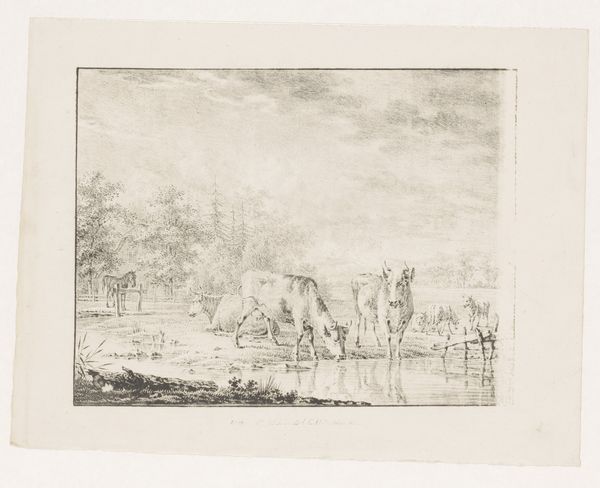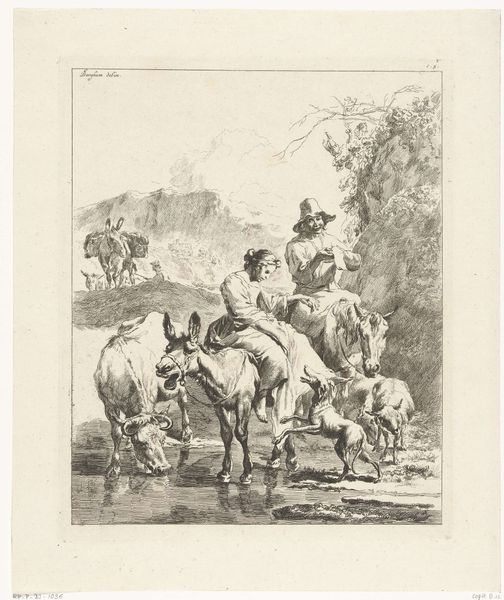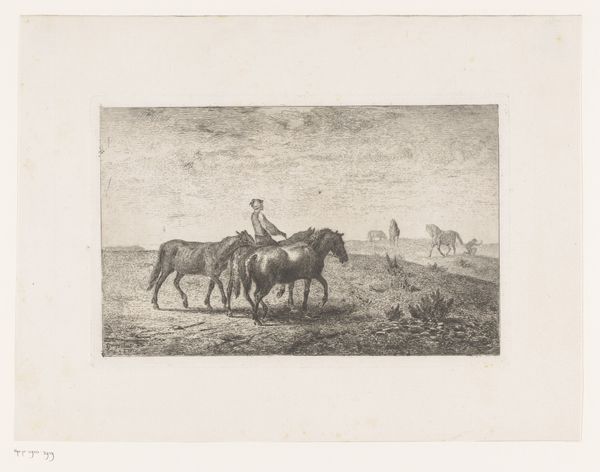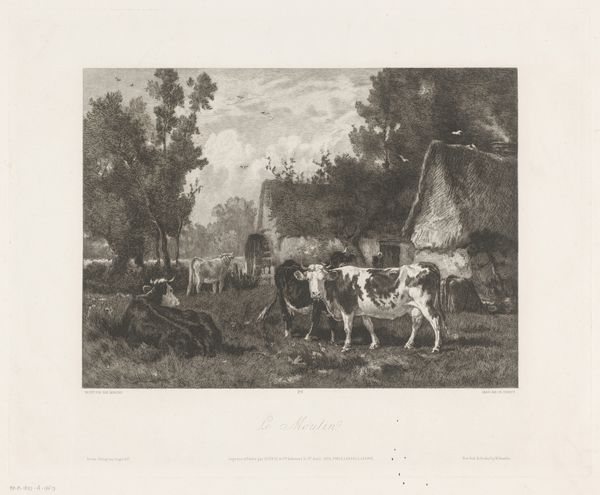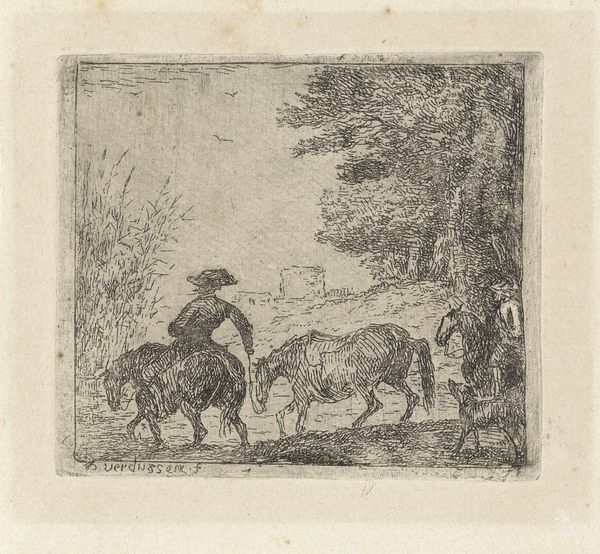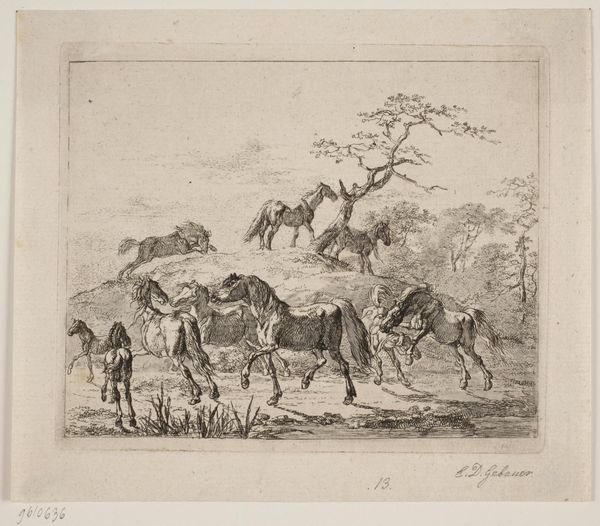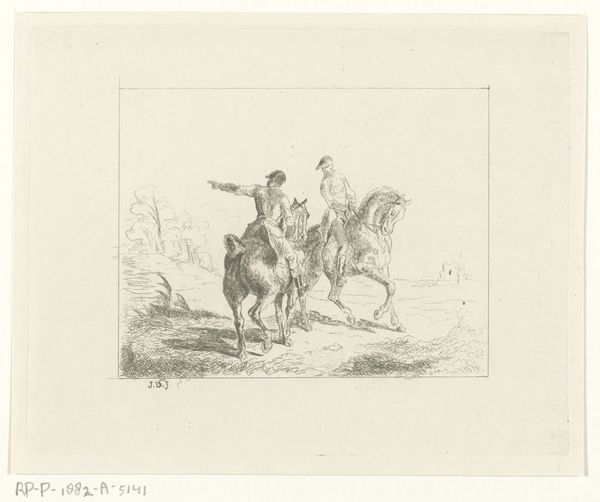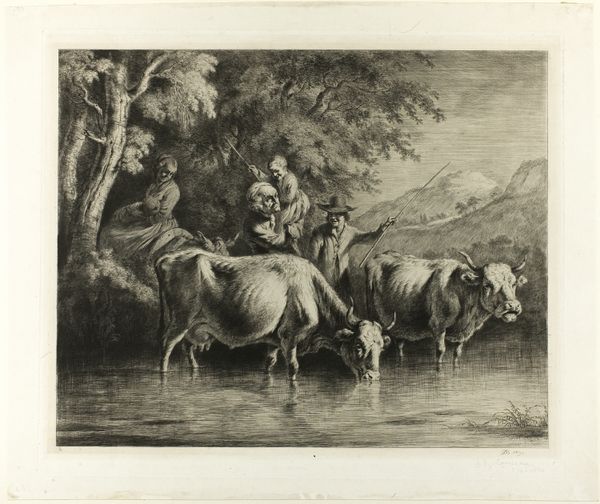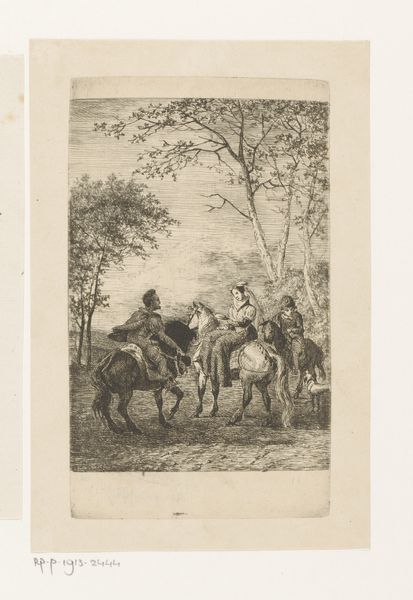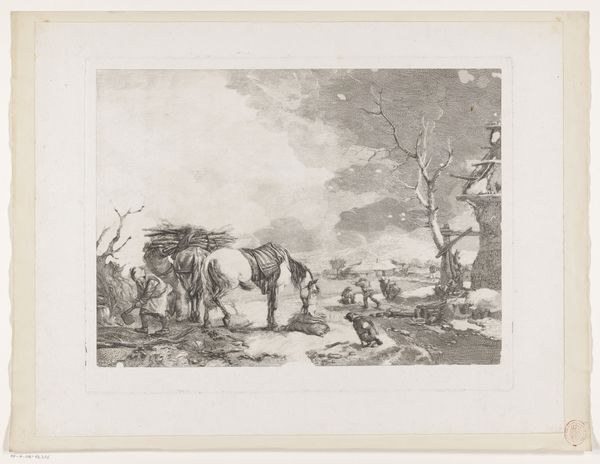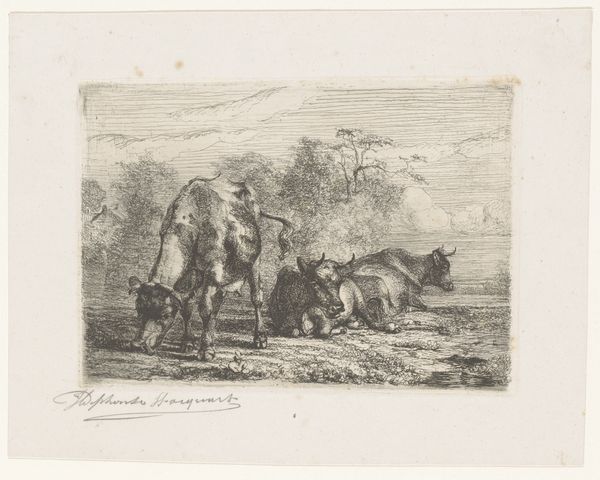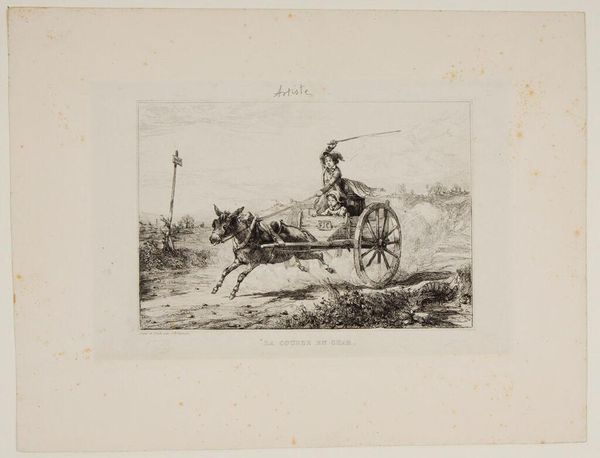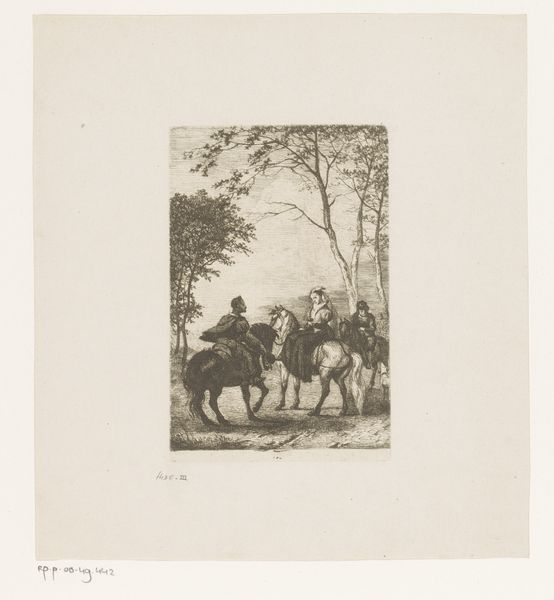
Dimensions: height 230 mm, width 248 mm
Copyright: Rijks Museum: Open Domain
Editor: We’re looking at “De slaande schimmel,” or “The Striking Mold,” an etching on paper by Johannes Arnoldus Boland, dating roughly from 1860 to 1900. It's quite a dynamic scene, all in monochrome. What structural elements stand out to you? Curator: The dynamism you mention derives from the diagonal composition, doesn’t it? Observe how Boland structures the space using stark contrasts between light and shadow, pushing the viewer's gaze from the shadowy grove on the left toward the brighter, more open space on the right. Note also the density of line work within the foliage versus the more sparse and active lines used to describe movement in the figures and animals. Editor: That's a helpful observation about the varying line density. I hadn't considered the compositional function of the landscape itself, thinking mainly about the narrative. It's clever how the shading draws the eye and implies movement. What effect do you think that technique creates? Curator: The varied lines add a tangible energy, don't you think? Note how the figures and horses almost become extensions of the landscape, unified through the consistency of these artistic techniques. What strikes you about their placement within the composition? Editor: It is like the lines and shapes tie everything together visually. So the scene may seem like just a snapshot of everyday life. It's very fluid. This gives it an intimate feeling, but at the same time grand by framing it. This landscape as a way of enhancing the composition makes me rethink what I previously thought! Curator: Precisely. By examining its internal formal relations, this piece of artwork creates a captivating synergy between form and function.
Comments
No comments
Be the first to comment and join the conversation on the ultimate creative platform.
